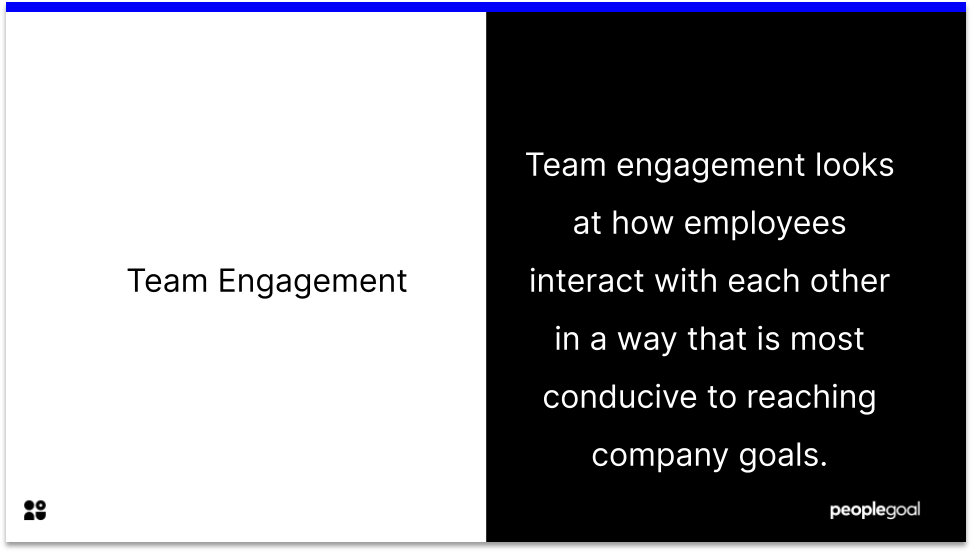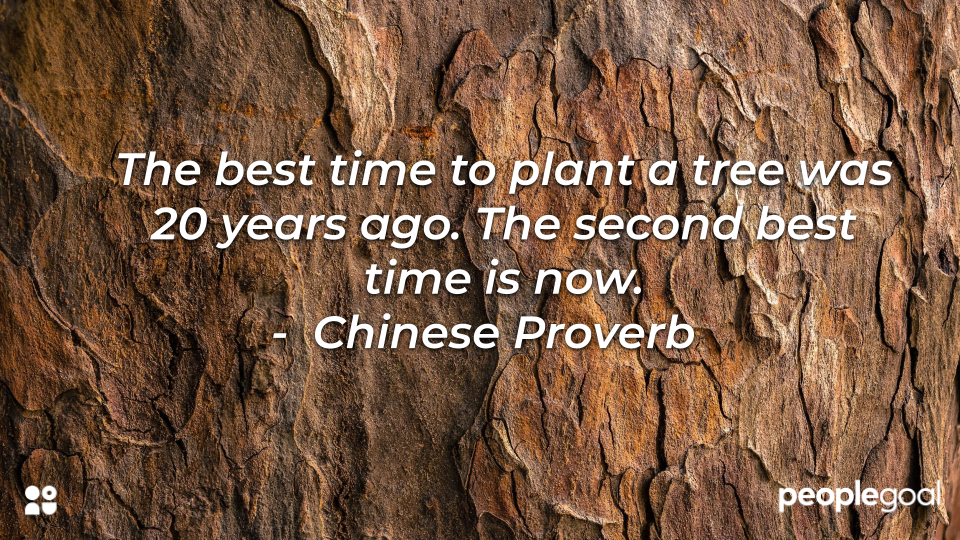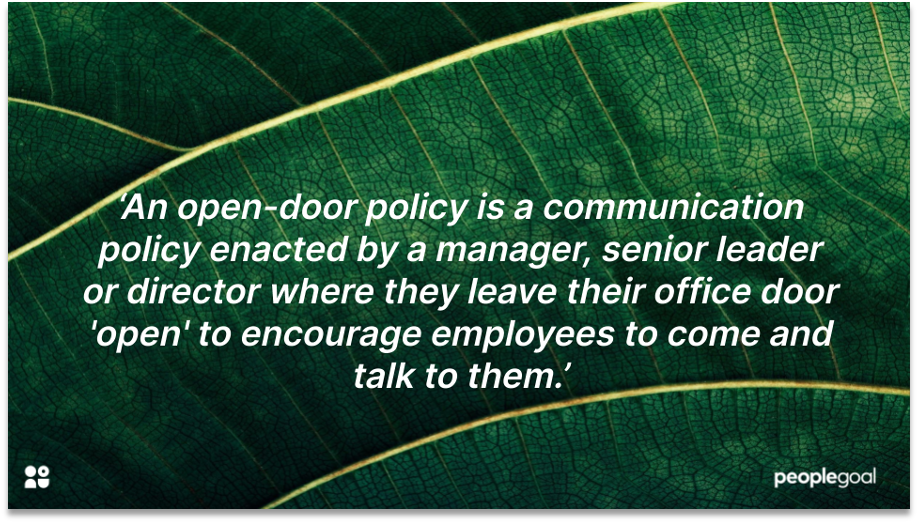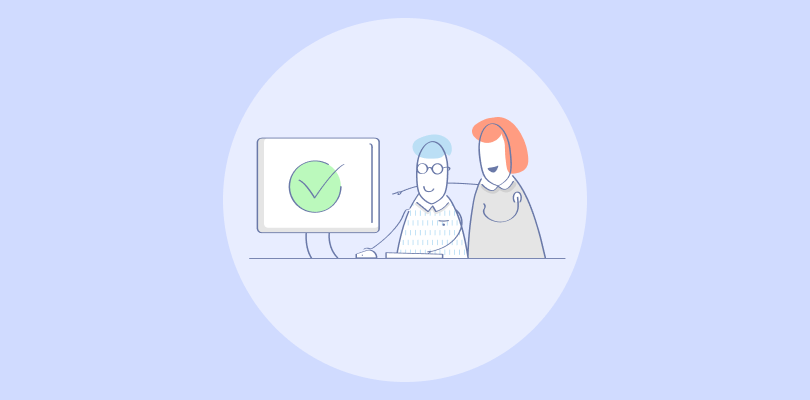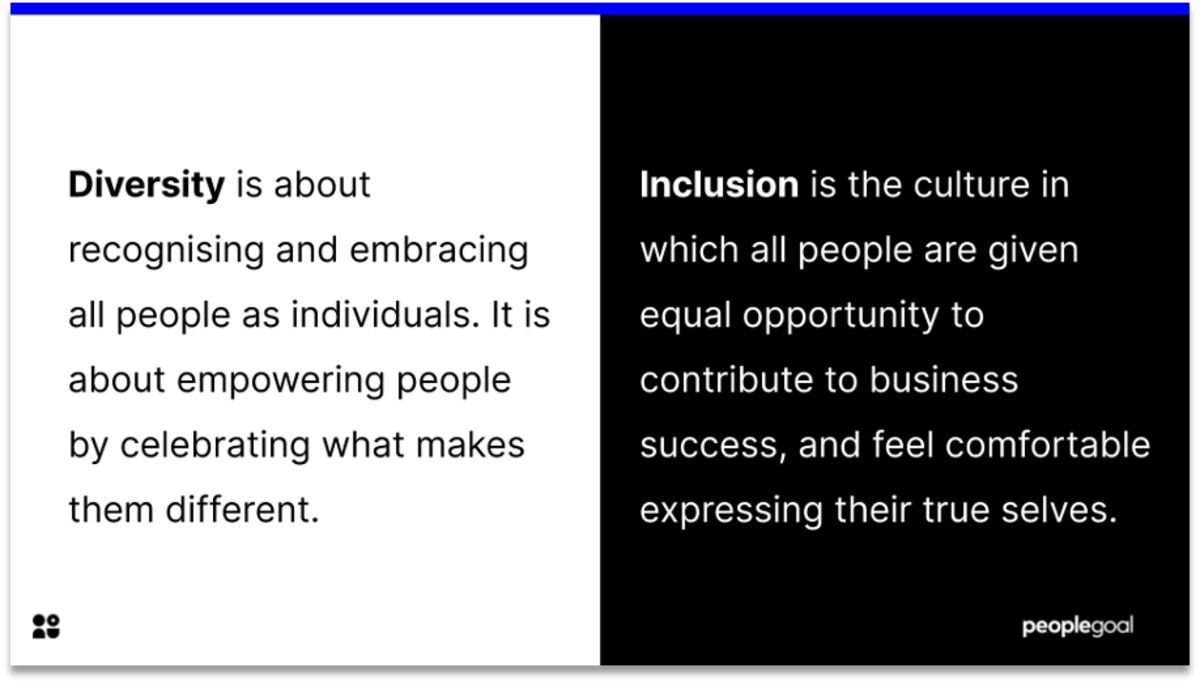What is an unconscious bias?
Unconscious biases are learned stereotypes, attitudes or categorizations, which are automatic, unintentional, inbuilt and often have an effect on our decision making and behaviour. Unconscious biases and their subsequent effect on our decision making and behaviour can lead to inaccurate assessments.
Unconscious biases are suggested to be an evolutionary adaptation for humans to process and assimilate multiple sources of information in an instant. They are basically ‘time saving techniques for the human brain’. For example, our brains can consciously process 40 pieces of information per second, but can process 11 million pieces unconsciously. But as with anything when someone tries to take corners or shortcuts, mistakes are inevitable. Unconscious biases are essentially automatic processes of information assimilation which effect behaviour and decision making but are prone to mistakes and faults.
Unless we are actually aware of these biases – which by definition means they become conscious biases (which are a completely different kettle of fish and have their own associated negative implications) – unconscious biases are outside of our awareness and can have a number of implications on a range of workplace faculties, from recruitment to diversity and productivity. Here are some of the most common unconscious biases found in the workplace.
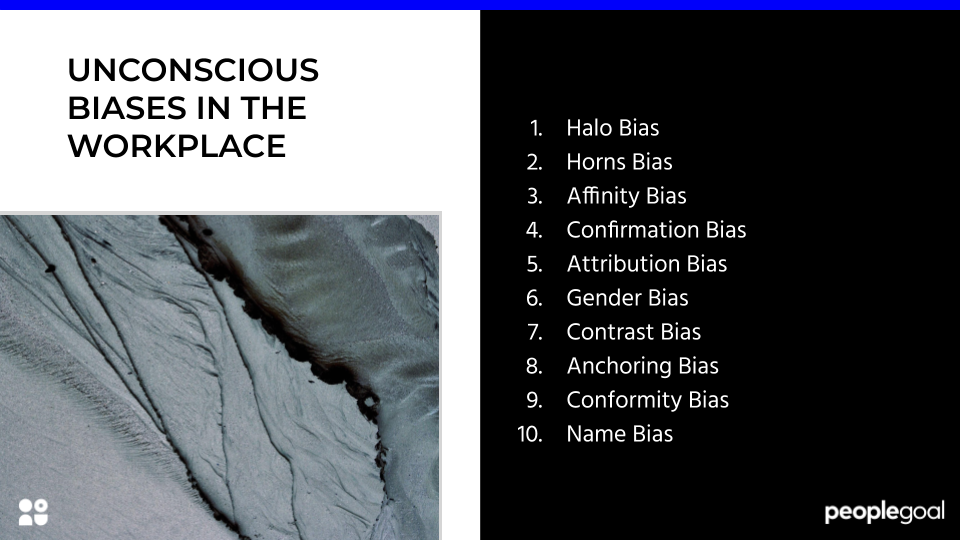
1. Halo Effect
The halo effect, sometimes called the halo error, is the tendency for positive impressions of a person to reflect positively or influence judgements and opinions in other areas. Put simpler, the halo effect is when you see a halo on someone’s head because of one trait or instance, then see this halo in all tasks they do. Basically, you are putting them on a pedestal.
For example, when reading a prospective candidate CV, you may see that they went to a particular university and this may influence your opinions positively when looking at other areas, especially those that they may fall down on.
2. Horns Effect
The horns effect is essentially the opposite of the halo effect. It is an unconscious bias which causes the perception of an individual to be unfairly influenced by a single negative trait. For example, if an individual uses a particular phrase that we don’t like, we may subsequently begin disliking a lot of things they say as a result.
3. Confirmation Bias
The confirmation bias is one of the most studied unconscious bias. It is referred to commonly in Psychology and other social sciences and is a feature in a range of workplace scenarios. The confirmation bias is a type of cognitive bias which involves favouring or choosing information which fits in with one’s pre-existing beliefs. It leads to selective observation and may mean you begin overlooking or rejecting information which doesn’t fit in with your view.
The confirmation bias is commonly found in the hiring process where a recruiter may have built an opinion of someone and subsequently seek out information to confirm their original view.
4. Affinity Bias
The affinity bias is one that we’ve all definitely encountered before, but most likely outside the workplace. The affinity bias, also known as the similarity bias, is the tendency for people to connect with others who share similar backgrounds, experiences and interests. Affinity bias in the workplace may not seem like an issue at first glance, but at more toxic levels it may have serious implications for diversity in the workplace.
5. Attribution Bias
The attribution bias is another bias which is seen extensively both in and outside of the workplace. It is all about how we assess behaviour. When something good happens to us, we believe that it is all our doing. When something bad happens, we blame it on external factors. What about when we assess the behaviour of others? Well, it’s very much the opposite. When they do something good, we think it’s usually luck. When something bad happens, we assume it’s their fault.
6. Gender Bias
One of the most pervasive biases in society and can be regarded both as an unconscious and conscious bias. Gender bias is the tendency to prefer one gender over another. The gender pay gap and the difference in hiring rates are two of the most common instances of gender bias. Further as workplace research moves forward, investigation into LGBTQIA+ biases will become super important.
7. Contrast Bias
The contrast bias refers to when ranking things. Contrast bias is the tendency to promote or demote an item after a single comparison with another item in the group, as opposed to a ranking compared to the whole group. For example, when reviewing loads of candidates for a job, it is very easy to compare the candidate to the previous one in the pile, as opposed to the whole stack of CV’s.
8. Anchoring Bias
The anchoring bias is similar to both the halo and horn bias. Apart from the fact it has no valence associated with it. That is the tendency to unduly rely on positive or negative information. Instead, the anchoring bias is the tendency to rely too heavily on one trait or a piece of information.
9. Conformity Bias
Conformity bias is arguably the godfather of all the cognitive bias. Dating back to the 1930‘s and the work of researcher Solomon Asch. Conformity bias is the tendency to behave similarly to other members in a group, even if it contradicts your own opinion or judgement. It can often dissuade creativity, restrict opinions and reduce people challenging each other )healthily) .
10. Name Bias
A slightly odd one, but the name bias is exactly what it says on the tin. A preference for someone based on their name, which positively reflects on your decision making and judgements subsequently.
Alarmingly, one study found that White names receive 50% more call backs than African American names. A separate study found that Anglo last names are 28% more likely to receive a call back than Asian last names.
Ready to 3x Your Teams' Performance?
Use the best performance management software to align goals, track progress, and boost employee engagement.

